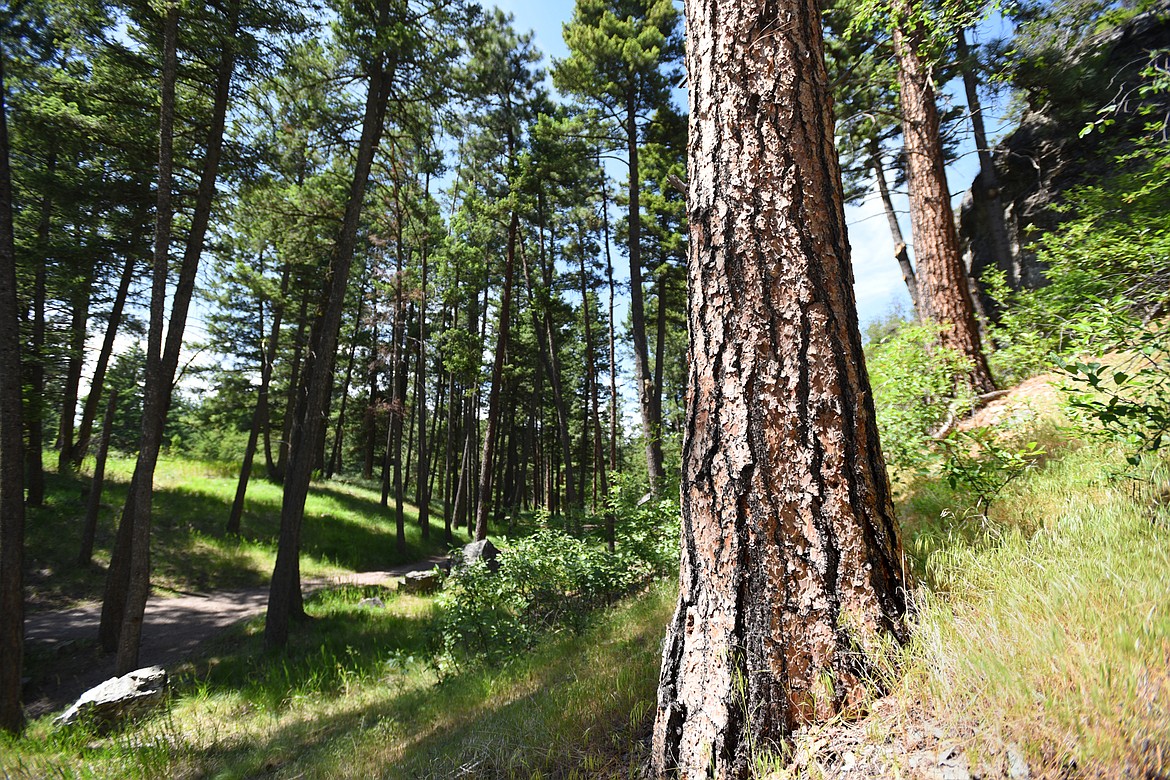Possible forest work slated for Lone Pine State Park
Montana Fish, Wildlife and Parks is considering a forest thinning and tree planting project at Lone Pine State Park aimed at improving forest health and stand diversity.
“This is an early step to share with people what we’re seeing and get some feedback on it,” said Dave Landstrom, regional parks and outdoor recreation manager for the state agency. “If we hear back and we continue to feel like we’re going to propose some actions, then we would conduct an Environmental Assessment in the winter.”
Agency officials will present the proposals at 6 p.m. on Tuesday, Sept. 17 at the Lone Pine State Park Visitor Center, 300 Lone Pine Road in Kalispell. Members of the public are encouraged to attend.
Before the agency can make any formal project proposals, officials must go through a scoping period that includes sharing the forest management issues they experience with the public.
In the case of Lone Pine State Park, it displays general forest condition issues, including a high degree of dead and dying trees, insect mortality and a high percentage of dwarf mistletoe, a parasite that weakens Douglas fir, according to Landstrom. The Sept. 17 meeting will highlight possible techniques to address those issues.
Techniques could include hazard tree analysis and removal, fuels mitigation and the planting of western larch and ponderosa pine.
Agency officials have performed similar work in the park for the past two decades, but these proposals would cover new ground, Lindstrom said. The goal is to improve the resilience of the forest and reduce wildfire risks.
“What we’ve learned is forest management is an ongoing process, it’s not a one and done sort of thing,” Landstrom said. “If we form proposals, we will let people know specifically where in the park and what we would be doing.”
A 40-acre plot of land adjacent to the project area is under a conservation easement with the Flathead Land Trust. Added to the park in 2007, the area, owned by the Van Riper family, was placed under the easement to protect it from future development.
The plot of land is one of the areas where action is required, Landstrom said. The state wildlife agency has been working with the Flathead Land Trust to ensure work there abides by the contract of the easement.
"I certainly understand their purpose in doing it and what they’re trying to accomplish,” said Ryan Hunter, a land protection specialist for the Flathead Land Trust. “We don’t have too many concerns about it.”
Hunter walked the property alongside state officials last week, highlighting two main issues: the mistletoe infestation, which Hunter described as “quite significant,” and the crowding of smaller understory trees.
While officials expect concern about aesthetics, the overall goal of the projects shouldn’t be too controversial, agency officials said.
“What I have seen in my career here is an evolution in attitude about forest management,” Landstrom said. “I think generally people have a general knowledge about the need to address heavy insect infestation or heavy disease infestation.”
Money for the project would come from pass-through grants administered by the Montana Department of Natural Resources meant for work on smaller parcels of forest land within the wildland-urban interface.
Lone Pine State Park became a state park in 1941. The nearly 300-acre park is bounded by residential neighborhoods, making it an important target for fuel mitigations. Through a variety of projects over 20 years, the state agency has worked on around 200 total acres.
If approved, work is slated to begin in October 2025 and wrap up by July 2026.
The agency is also accepting public comment through Oct. 18 at 5 p.m. Comments can be emailed to bschwartz2@mt.gov or mailed to Brian Schwartz at Montana, Fish, Wildlife and Parks, 490 N. Meridian Road, Kalispell, MT, 59901.
Reporter Kate Heston can be reached at kheston@dailyinterlake.com or 758-4459.

